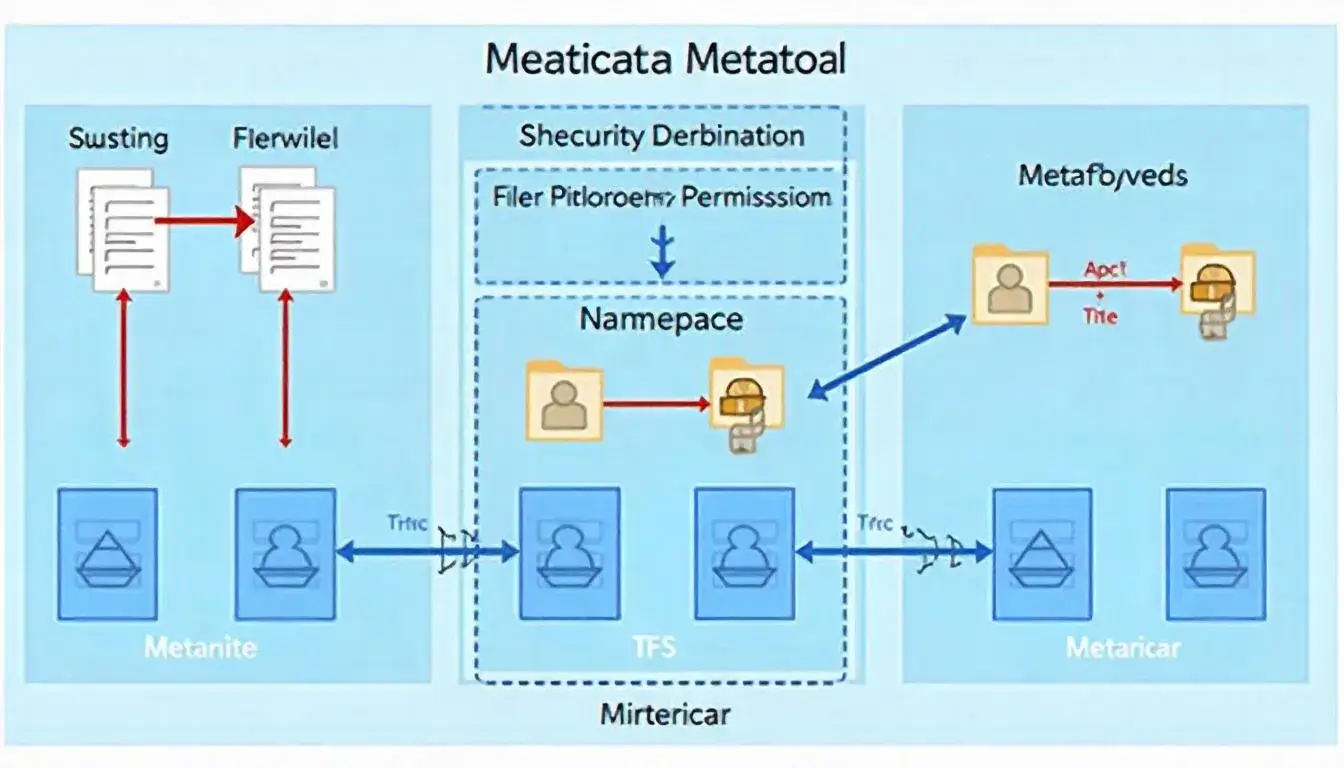The Taobao File System (TFS) is a distributed storage architecture built by Alibaba’s Taobao platform to manage and scale the growing demand for handling billions of small files.
Unlike traditional file systems that struggle with metadata management and efficiency at such a scale, TFS is optimized for high-throughput storage with minimal latency, tailored to e-commerce and large-scale web platforms.
This blog post explores the architectural foundations, design strategies, scalability, and primary use cases of the Taobao File System. Ideal for developers, architects, and technology strategists, this guide simplifies TFS’s sophisticated backend and its vital role in managing data at scale.
Introduction to Taobao File System
What is the Taobao File System (TFS)?
TFS is a proprietary distributed file system designed by Alibaba Group, tailored for their e-commerce platforms like Taobao and Tmall. It addresses unique challenges in storing and accessing massive volumes of small-sized files, often ranging from a few bytes to a few kilobytes.
Why TFS Was Developed
Traditional file systems struggle to scale efficiently in scenarios involving high file counts, especially when files are small. Metadata bottlenecks, storage overheads, and I/O inefficiencies make legacy systems inadequate. TFS was designed to tackle these problems specifically within the context of Taobao’s infrastructure.
Key Objectives of TFS
- Optimize storage for billions of small files
- Support high availability and fault tolerance
- Ensure low-latency file access
- Simplify maintenance and upgrades
- Enable horizontal scalability
TFS Architecture Overview

Core Components of TFS
1. MetaServer
The MetaServer manages all metadata including file namespaces, directory structures, and block location mappings.
2. ChunkServer
The ChunkServer is responsible for storing actual data blocks. Files are broken into chunks and distributed across multiple ChunkServers.
3. Client Library (TFS SDK)
Applications interact with TFS via a lightweight SDK that handles file uploads, downloads, and metadata queries.
4. Monitor and Master Nodes
A monitoring system keeps track of ChunkServer health, traffic, and latency. Master nodes help orchestrate rebalancing and replication.
Data Flow in TFS
File Write Process
- Client requests to upload a file
- MetaServer assigns ChunkServers
- File is divided and sent to assigned ChunkServers
- Metadata updated upon successful chunk storage
File Read Process
- Client requests a file by name or ID
- MetaServer returns chunk location(s)
- Client fetches data directly from ChunkServers
Scalability and Performance
Handling Billions of Small Files

TFS is designed for high-density environments. The system avoids unnecessary replication for tiny files by intelligently bundling and indexing them.
High Throughput and Low Latency
By enabling parallel file transfers and reducing metadata lookup times, TFS sustains massive traffic without compromising speed.
Horizontal Scaling
As demand grows, additional ChunkServers and MetaServers can be added without disrupting existing services. Load balancing and replication adjustments happen automatically.
Design Principles Behind TFS
Separation of Metadata and Data
Metadata and file data are stored independently, reducing contention and enabling faster lookups.
Immutable File Design
Once written, files are immutable—simplifying concurrency control and versioning.
Erasure Coding and Replication
TFS uses erasure coding and selective replication strategies to balance redundancy and storage efficiency.
Use Cases of TFS
E-commerce Media Storage
Stores billions of images and thumbnails with rapid access and low latency.
Log Aggregation and Analytics
Stores structured logs across servers, allowing real-time querying and batch processing.
Backup and Archival Storage
Efficiently stores historical and versioned data using compression and erasure coding.
AI and Machine Learning Data Lakes
Feeds training pipelines with consistent, high-throughput file access.
Comparing TFS with Other Distributed File Systems
TFS vs HDFS
- Metadata Optimization: TFS handles smaller files more efficiently
- Performance: TFS is tuned for Taobao workloads; HDFS is general-purpose
TFS vs Ceph
- Use Case Focus: Ceph supports block and object storage; TFS specializes in small file distribution
TFS vs GlusterFS
- Scalability: TFS scales more predictably with billions of files
- Architecture: TFS’s separation of metadata/data improves latency
Challenges and Limitations
Learning Curve and Ecosystem Lock-in
Being a proprietary system, it lacks widespread documentation and has a steep integration curve for outsiders.
Write-Once Semantics
Immutable file design is optimal for some workloads but restrictive for others that require frequent updates.
Monitoring Complexity
Large-scale deployments require sophisticated observability tools to ensure stability.
Best Practices for Implementing TFS
Use Case Assessment
Only implement TFS where small file management is a bottleneck.
Plan for Metadata Scaling
Ensure your MetaServers are provisioned with SSDs and redundancy.
Security and Access Controls
Implement authentication at the SDK layer and restrict write access by service.
Future of TFS in Alibaba Ecosystem
Integration with Object Storage
Alibaba is exploring hybrid models where TFS serves as a metadata layer for cold storage on OSS.
AI Optimization
Ongoing enhancements are focused on supporting AI workloads, especially with high-throughput, read-heavy patterns.
Open Source Possibilities
While currently closed-source, parts of TFS may be abstracted or ported to public tools in the future.
Conclusion
The Taobao File System is a prime example of purpose-built infrastructure tailored to solve domain-specific challenges at scale. From handling massive volumes of tiny images to scaling across thousands of servers, TFS exemplifies engineering at hyperscale. By understanding its architecture and ideal use cases, developers and architects can learn how to better approach distributed storage for the modern web.
Frequently Asked Questions
What makes TFS different from HDFS?
TFS is designed specifically for small files and high throughput, while HDFS handles large, block-based files.
Can developers outside Alibaba use TFS?
TFS is not publicly available, but architectural concepts can inspire similar systems.
Is TFS still in active development?
Yes, Alibaba continues to evolve TFS alongside its cloud and AI platforms.
- Understanding Taobao File System (TFS): Architecture and Use Cases
- How Taobao File System (TFS) Powers Massive Image Storage and Processing
- 5 Reasons Why Ecommdirect is a Game-Changer for Online Retailers
- EcommDirect: The Future of Seamless Online Shopping in 2025
- Connective Ecommerce: The Future of Seamless Online Shopping


